In some of these images the Hooded Mergansers have fish prey and in some they don’t but all photos document various behaviors. They were taken four days ago in Salt Lake County.
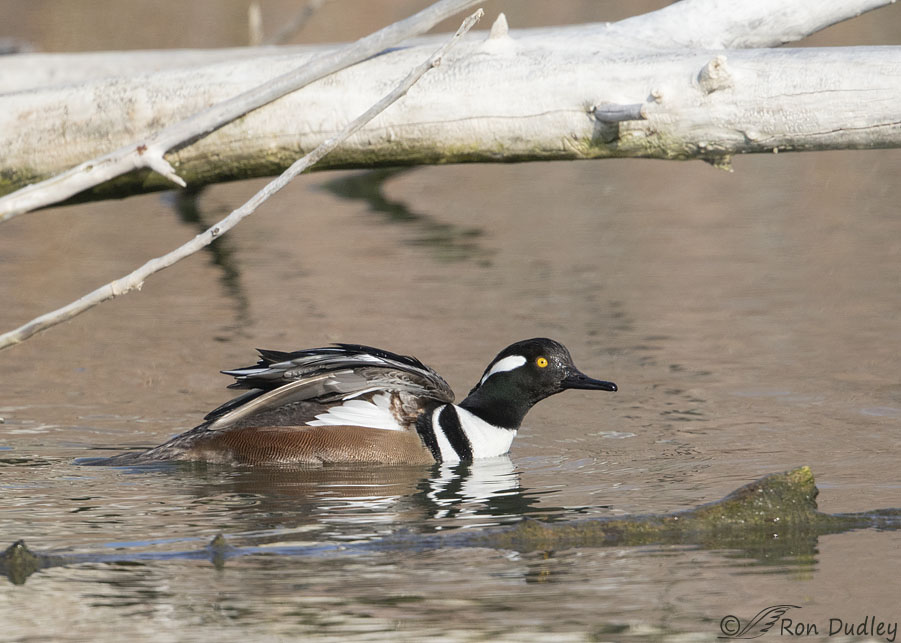
1/2500, f/6.3, ISO 640, Canon 7D Mark II, Canon EF 500mm f/4L IS II USM + EF 1.4 III Extender, not baited, set up or called in
Once while I was with the mated pair of Hooded Mergansers they both took a short rest on a log but they were partially blocked by vegetation so I deleted those images. Here we see the male (the female is out of frame behind him) just after he hopped off the log into the water and he then performed an abbreviated wing stretch.
Typically I see birds stretch their wings in three primary ways – fully extended and pointed down, fully extended and pointed up or up and forward and little mini-stretches like this one where the bulk of the wing remains in the folded position but the wing is tilted straight up at the shoulder.
I saw this male stretch his wings three times (and photographed it twice) and he stretched this way every time – the “mini-stretch”. Falconers have a name for this type of stretch but I can’t remember what it is. But since all three of his stretches were like this one I have to wonder if this species ever stretches any other way – stranger things do happen with birds.
A sample size of only three is hardly conclusive but I still have to wonder.
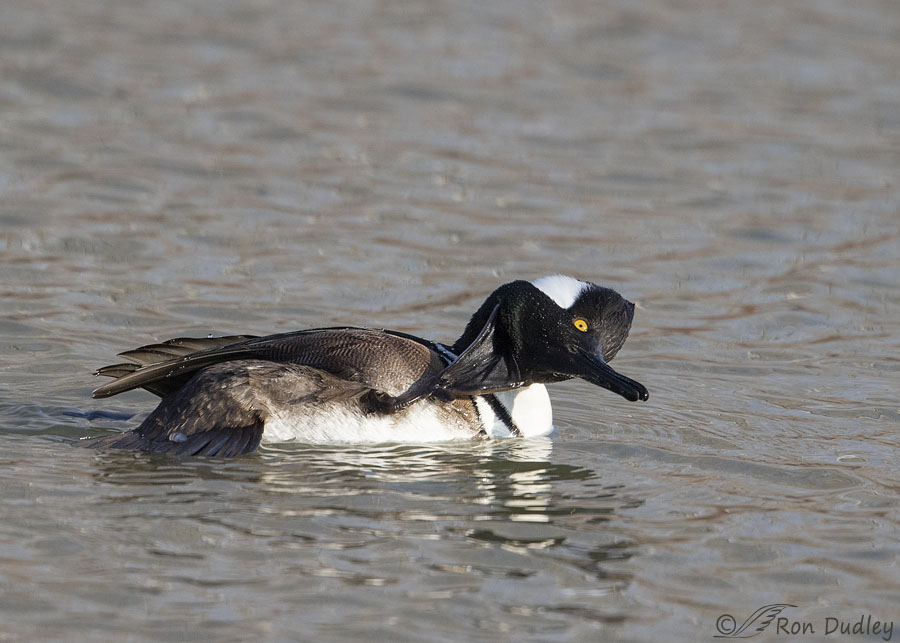
1/2000, f/6.3, ISO 640, Canon 7D Mark II, Canon EF 500mm f/4L IS II USM + EF 1.4 III Extender, not baited, set up or called in
This was just a head-scratching session but I enjoyed watching because he really got into it. And I even got a few shots with both his eye and his nictitating membrane open – usually one or both are closed in this situation to protect their eyes.
Ok, now to their fish prey.
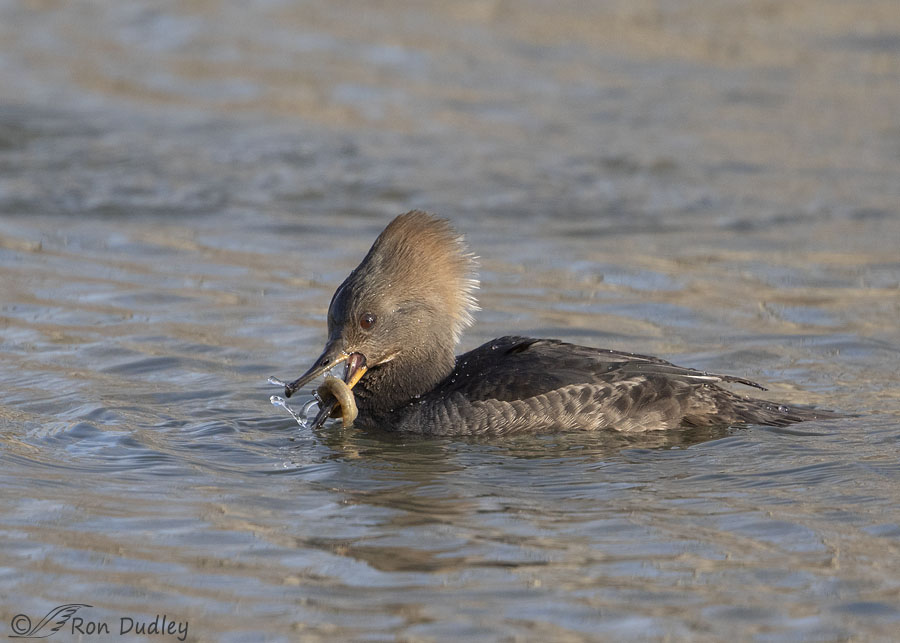
1/2000, f/6.3, ISO 640, Canon 7D Mark II, Canon EF 500mm f/4L IS II USM + EF 1.4 III Extender, not baited, set up or called in
Every fish I saw them catch, at least a half dozen of them, was a weather loach of one size or another. Loaches instinctively use their long bodies in a defensive strategy that involves wrapping tightly around the bill of their tormentor and it can be very effective, at least for the short run. And sometimes it even makes the bird eventually drop the fish as it tries to deal with the slimy, slippery prey.
This time it was unusually fun to watch because the loach was so tightly wound around the female’s lower mandible that she had considerable trouble getting it off. Here her bill is completely open as she tries to loosen the tight grasp of the uncooperative loach.
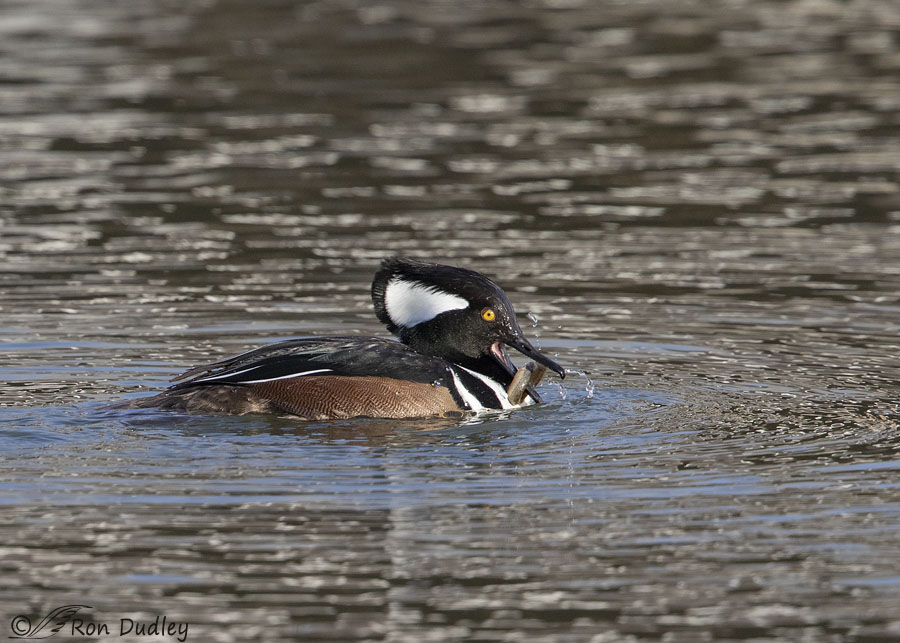
1/2000, f/6.3, ISO 640, Canon 7D Mark II, Canon EF 500mm f/4L IS II USM + EF 1.4 III Extender, not baited, set up or called in
In this shot the male was beginning to have the same problem with his loach and he looks a little chagrined by it as if he’s hoping no one is watching.
I keep coming back to look at this unusual combination of colors in the water reflections of this shot. I still can’t decide if I like them or I’m just a little fascinated because they’re so different. Either way I guess it’s a good thing, at least for me, because I’m more than a little intrigued.
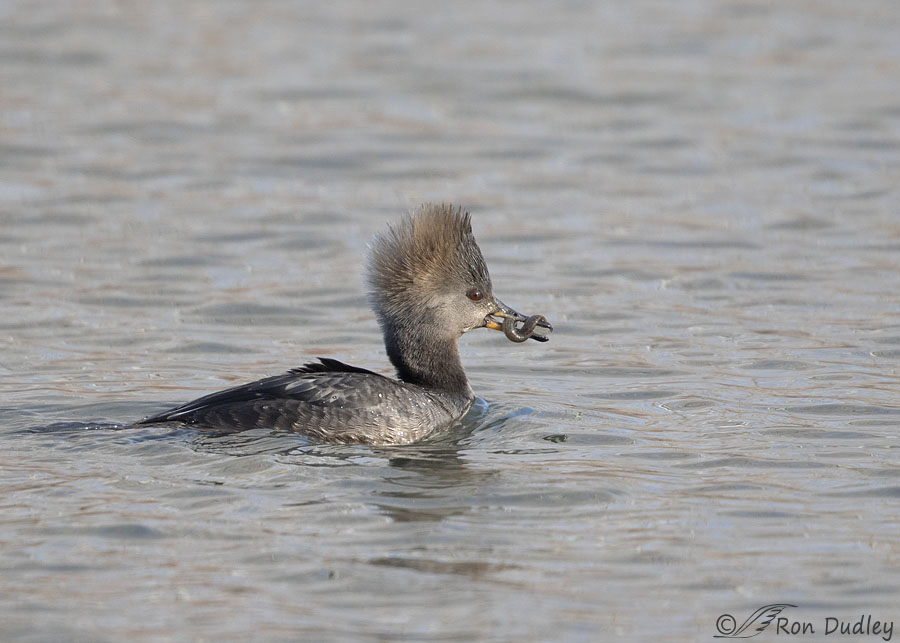
1/1250, f/6.3, ISO 640, Canon 7D Mark II, Canon EF 500mm f/4L IS II USM + EF 1.4 III Extender, not baited, set up or called in
The size of the loaches these mergansers were feeding on varied a lot. In this shot the female had one of the smallest ones I’ve seen and…
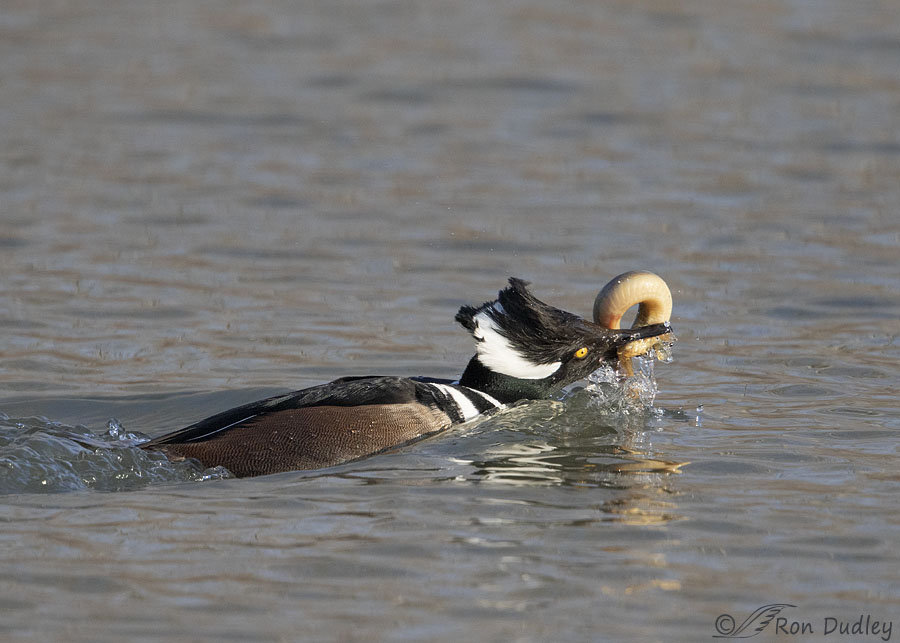
1/3200, f/6.3, ISO 640, Canon 7D Mark II, Canon EF 500mm f/4L IS II USM + EF 1.4 III Extender, not baited, set up or called in
a while later the male caught what may be the largest loach I’ve seen a bird of any species with. It’s hard to tell for sure because I’m judging size at least in part based on the relative size of the bird and Hooded Mergansers are very small ducks.
Ok, enough posts about Hooded Mergansers, at least for a while. I’ve done three blog posts about them recently and it’s time to move on. Sometimes when I finally get to spend some quality time with a species I rarely photograph I can become overzealous and even a little fixated.
Ron


Fascinating. Thank you so much.
Thank you, Arwen.
Pretty birds and rarely seen, please be overzealous.
I probably will be on occasion, April.
MAGICAL, MARVELLOUS Miscellanous Merganser Moments. With a touch of Mystery added.
A miraculous collection of “m” words, EC!
Well, you sent me down a rabbit hole as well. I learned that Florida has one introduced and established loach, the Oriental Weatherfish, but it does not look as if it is same species as yours. It grows to almost a foot (28 cm) in length.Also can thank the aquarium fish trade for their presence, along with hundreds of other fish species in Florida’s fresh and salt waters.
Yup, aquarium exotics are probably a bigger problem in Florida than in any other state, Ken. I just wish people would THINK before they release them.
Thought provoking post. Whatever ecological effects the loaches are causing, they appear to be a boon for the piscivores. Interesting description of the type of wing stretches: avian yoga postures. I think I’ll incorporate them into my stretching routine.
Ha, I hope it works for your routine, Lyle. Thanks.
Very interesting set of photos today and info. You have posted several times photos with the ‘weather loach’ as an incidental item. Until your blog I don’t believe I’ve ever heard of it before so ‘inquiring minds want to know’ 🤔 and off on a search I went and spent far too long of a time on it! 😧 Another one of those aquarium and home pond toss-aways…like goldfish and Koi. Then I remembered I took my first photos of a BlackCrowned Night Heron last summer and it was try to eat a longish narrow looking fish and had to check those out again. But I do think my first assumption was correct…a ‘mud-puppy’. Strange the way our minds wander off sometimes…like your GoldenEye of yesterday! 😏 Keep tossing out tidbits for us to ponder…
One never knows where “rabbit holes” like this will lead us, Kathy. I do the same thing, often. I think it’s usually fun, though sometimes there never seems to be an end to it. Thank you.
Wonderful series Ron!
Charlotte
Thanks, Charlotte.
Fun series, Ron. 🙂 Hard to look hard to sort out body parts on the scratch. 😉 Imagine it would be a bit stressful having that loach wrap around your bill! Makes me think of constrictor snakes which gives me the creeps! (not afraid of snakes by the way). Freezing fog last night and bit of snow today – windshield too a bit to clear…… P.S. your system is finally doing the auto-fill for me on name etc. “who knows”
Judy, I was actually thinking of the MT weather and especially the wind a few minutes ago when I took the trash can out into the street for pickup. The wind is blowing so hard I’m afraid it might blow the can over and that would be a real mess! I have so many memories of that MT wind and not a single one of them is a good one…
We’ve been blessed with little wind for almost a week now after a month or better of VERY strong winds…….YES!
Those Mergansers are working exceptionally hard for their meals! That is still one damn huge loach. I can’t get over that one. I like the light in the first shot and the head scratch makes me giggle — both welcome sights on (yet another) soggy morning. (Mama dog was again all kinds of nope on going out to potty in the rain. She’s either a little princess or very smart. 😉 )
It was kinda strange, Marty. I watched both mergansers fishing for quite a while, perhaps almost an hour, and neither one caught a single fish. Then within about 10 minutes they caught a half dozen of them between the two birds. Can’t quite figure that out…
Hi, Ron
Have you observed the Mergansers giving the loaches a beating, like a Kingfisher would do?
No, I haven’t, George. At least not beating them against a branch like kingfishers do, probably because they swallow them while they’re on the water. But they do whap them against the water surface while they’re simultaneously mashing the fish with their bills.
But I’ve posted images of that kingfisher behavior with loaches several times. Here’s one of them:
https://www.featheredphotography.com/blog/2016/02/18/belted-kingfisher-stunning-tossing-and-swallowing-prey/
Great action photos Ron and all interesting. I have never seen a duck, grebe, Kingfisher, or Merganser in possession of a loach so I am going to assume we don’t have them. Will have to check with local fishing friends. No problem here with a temporary fixation on Mergansers. Love their exotic look and their actions in the water. Very enjoyable series.
Everett Sanborn, Prescott AZ
Thanks, Everett. Since the source of weather loaches in our waterways is fish fanciers releasing their fish in streams and ponds and they’re tolerant of a wide range of conditions weather loaches are now found in large areas of the country. You may very well have some of them but fishermen may not even know they’re there.